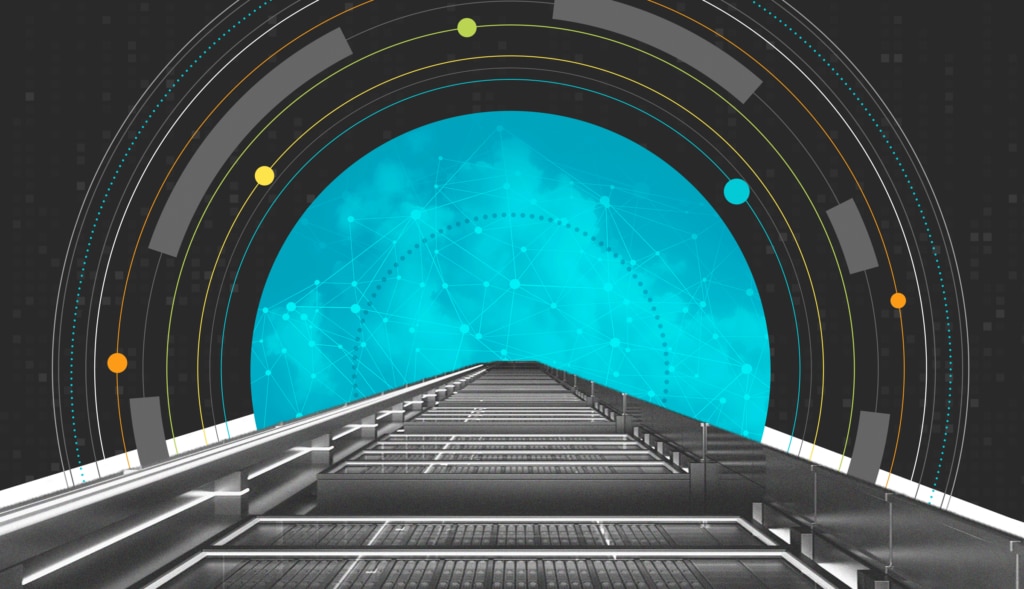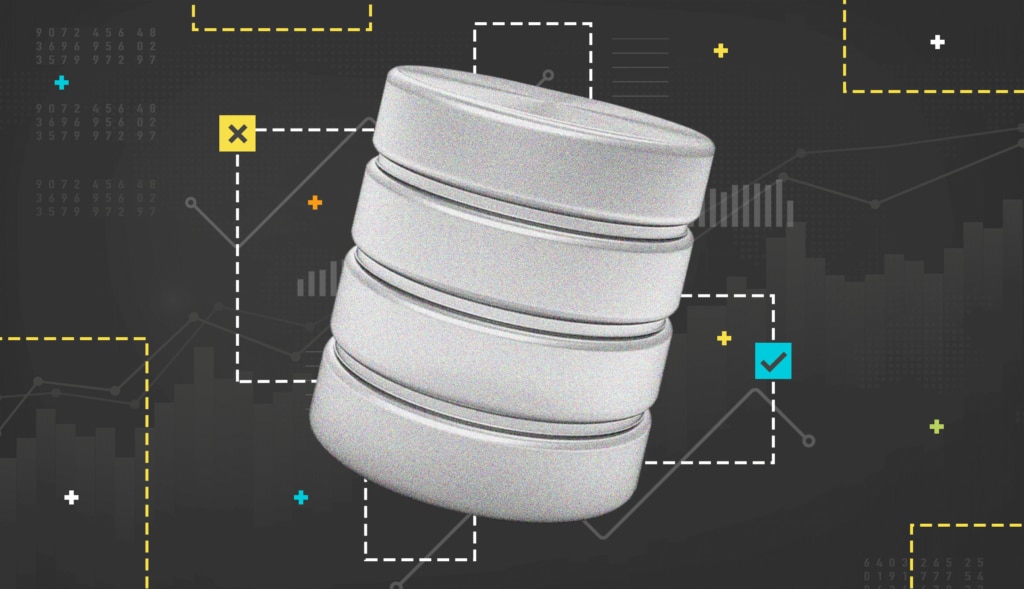After the craziness of the last few years, who can blame IT, DevOps, and operations teams for wanting more stability in their personal lives and jobs? Yet the message from the top isn’t in line with this:
Gartner reports over 94% of CEOs aim to accelerate pandemic-era digital transformation and are
investing 5.1% more into IT budgets. This means threading a delicate balance between stability and scalability.
As a result, organizations will need a way to seamlessly understand the internal state of their rapidly expanding hybrid infrastructure to identify the right problems, automate the right areas, and continue delivering the services leading business success and optimal digital experiences: enter full-stack observability. In this post, I’ll define full-stack observability, discuss its benefits, features to look for, and essential questions to ask when choosing a full-stack observability solution.
What is full-stack observability?
Full-stack observability centralizes multiple, disparate outputs for a consolidated view across distributed IT environments, whether on premises, in the cloud, or a hybrid deployment. Full-stack observability can allow modern businesses to meet the challenges of digital transformation by extending visibility beyond the limits of traditional monitoring tools.
Organizations are learning how full-stack observability can help teams reach optimal service performance, compliance, and resilience by using a single source of truth to identify and resolve events with the potential to cause performance degradation and loss of productivity.
Benefits of full-stack observability
The need to consistently deliver high-quality digital experiences and service-level commitments against the backdrop of supporting hybrid cloud environments has raised the bar, straining the capabilities of domain-centric monitoring tools and
legacy systems.
As a result of pushing the limits of what can be accomplished with the management and monitoring of databases, networks, and services, it has become essential to rein in fragmented organizational silos and minimize reliance on manual processes by using full-stack observability to empower teams and improve the performance of environments. Here’s how full-stack observability can help.
Tear down departmental silos
If their experience during the pandemic is any indication, most teams can expect to remain actively involved in running the business, not just playing support. However, instead of each department owning just a piece of their organization’s ever-expanding hybrid IT stack, teams across the organization will need broader visibility with even deeper insight into their ever-changing environment. Fortunately, organizations can turn to full-stack observability to help teams manage this transition and deliver in their new roles more effectively.
As the business grows, teams like IT must also split between scaling infrastructure and maintenance, ensuring vision-driving technology is deployed correctly and
service-level agreements (SLAs) remain in the green. This entails a role and mindset shift for everyone from technical problem solvers to key decision makers. This is also true for other parts of the business—such as
DevOps roles or even financial and HR departments—as they’ve become heavily involved in the application stack and leveraging data for business-critical insights.
Although some may think observability primarily benefits IT stakeholders, its ability to enhance productivity, improve cost efficiencies, and make real-time operational insights available extends across the entire enterprise, from the data center and cloud-native assets to the C-suite.
Tool consolidation
Organizations can also more easily tear down operational silos by consolidating the number of tools they use. Since full-stack observability offers a single-pane-of-glass view of critical metrics, the centralized UI can provide an increasingly valuable source of truth for stakeholders and help foster a stronger partnership between IT and business leadership. This ultimately leads to improved collaboration, streamlined workflows, and elevated business objectives.
Further contributing to observability’s value is the total savings organizations can realize by eliminating licensing costs from multiple, individual tools and implementing one comprehensive observability solution built to minimize complexity and costs.
Optimizing observability for DevOps
A difficult decision concerning observability for DevOps is determining which events are important enough to watch. It’s tempting for the DevOps team to monitor everything, but this can prove counterproductive. These teams can spend more time on break/fix services than developing solutions to create better business outcomes.
With observability’s emergence as the new standard for gaining visibility into cloud architectures, IT stakeholders fully expect to gain a myriad of next-generation abilities. Among them, and perhaps most enticingly, is the ability to measure—in real time—the performance of applications and data flows based on collected outputs from systems within the targeted distributed network.
On the database/application side of the equation, observability empowers developers to detect performance issues with the code they put into production and initiate a rapid response to automated alerts when applications drift outside of specified baselines. Observability can also reveal how service dependencies can impact each other and the resulting impact on customer experience caused by performance issues and other operational challenges.
As a central vantage point of visibility and management for DevOps processes within next-generation app stacks, observability can be the primary driver for app modernization, reducing outages, and preventing performance degradation.
Modernizing apps and databases
Modernization is meant to transform static applications into agile applications, positively impacting enterprise technology and business culture. Possessing this capability is especially important, given the drastic rise in cloud-based application hosting.
Observability presents organizations with streamlined options for improved visibility into application hosting, which can empower teams across IT Ops, DevOps, Cloud Ops, and IT leadership to take full advantage of the cloud's potential power. This, of course, includes any mixture of on-premises, public, or private cloud environments, providing a one-stop tool for maintaining app and database stability.
What full-stack observability requires today
Data is the lifeblood of observability. Customizing the data your observability solution uses, how it analyzes this data, and the dashboard view in which it displays these metrics is imperative. An effective data management plan makes the highest degree of intelligence capabilities possible within the platform, presenting the organization with transcendent levels of anomaly detection and event correlation.
Other features your full-stack observability solution should provide include the following:
Full-stack monitoring
The primary advantage of observability over monitoring is its ability to monitor system components across the enterprise. Application performance, multi-cloud bandwidth, and device health are some examples of the actionable insights available from a full-stack observability platform. A vendor-agnostic solution can also better ensure systems are covered and be maintained at maximum performance with minimal effort.
Single-pane-of-glass views
Monitoring is only as good as the user interface is at displaying system status, reporting, or alerting information. Adding an observability platform with a single-pane-of-glass view makes the data and real-time status of components and functions available in a centralized yet fully distributed view. This stimulates faster troubleshooting and mean time to resolution (MTTR), making planning activities more constructive.
Though monitoring is still the cornerstone of preventing issues from occurring within systems, traditional monitoring tools aren’t designed to navigate modern infrastructure. In contrast, observability platforms are engineered to provide deeper insights across IT infrastructures and services using automation, cross-domain data correlation, machine learning, and more.
Automation
The automation contained within observability platforms is primarily driven by machine learning and powered by analytics. Through automation, observability can utilize AIOps to analyze telemetry data and logs for anomalies before initiating an alert for support teams or executing a predetermined response.
A central precept of observability is it can provide automated reporting of the environment, empowering IT, support, and operational teams to see the health of the infrastructure and isolate performance metrics as they occur or even travel back in time to discover the source of an issue more effectively.
An automated response can also further enhance response times and system performance. By aggregating log data and analyzing anomalies and vulnerabilities, integrated
AIOps can help identify and correct issues.
Automating monitoring, analytics, management, troubleshooting, root cause analysis, and compliance tasks can also allow teams to operate with greater efficiency and have more time to focus on the most impactful activities to better support business changes.
Data correlation across domains and platforms
Automated reports and issue responses are only as good as the data in use. Observability delivers a key advantage over monitoring in its ability to reach out across multiple domains, platforms, and distributed networks to store event-related information for analysis.
This enables IT departments to hasten responses and present business stakeholders with in-depth views of infrastructure and application performance. The ability to harness massive volumes of system status information enables these teams to build artificial intelligence (AI)-based responses to maximize the performance of their systems.
Machine learning and AI
Harnessing the power of telemetry data gets even better with the machine learning and AI capabilities of an observability tool. Observability enables the enterprise to implement the core functions of AI (data acquisition, data aggregation, analysis, and action) to expand its responsiveness.
The data-centric nature of these tools makes
using AIOps an ideal subset of observability. Since observability is designed to expand visibility and offer even faster response times, automation-driven AIOps and observability can be instrumental in maximizing the power of enterprise technologies.
You can read more about the
benefits of incorporating AI and machine learning across workflows here, including how it can help strengthen security operations (SecOps).
Choosing the best full-stack observability solution
Before choosing or implementing an observability solution, it's crucial to understand how you can best use observability capabilities to meet your ultimate business goals. This can help you develop an observability strategy to deliver the visibility you want to achieve and the business objectives you’re being asked to support—from improved end-user experience to better performance across your technology stack.
Does the observability solution support business goals?
To avoid missteps and false starts during your observability strategy development, it helps to thoroughly examine aspirational business requirements and plan how desired outcomes will contribute to the organization’s business objectives. This must be approached with an open mind, especially as the business transforms from a reactive to a proactive IT infrastructure.
A good starting point is documenting which business processes within the IT stack the organization can streamline. How and where do they need to access operational data? Where will the application stack reside once this transition is complete? What’s the ideal vision of the distributed network?
The upside of choosing a platform approach to bring data output from modules already in use can be measured in near-immediate impact and quicker return on investment (ROI). It also helps quantify expected visibility gains and improved efficiencies before making specific time and cost investments in your digital transformation journey.
Taking an organization's business requirements and translating them into tools is the next logical step. It's important to note this process must also consider commonplace challenges when transitioning from traditional monitoring to a state of full-stack observability. This hardens your final list of goals for productive and streamlined integration.
Will the solution help solve or add to the existing complexity?
Today’s businesses are focusing on efficiently scaling while maintaining their existing infrastructure, so the observability solution they adopt shouldn’t add to their daily workload. An avalanche of disparate alerts, notifications, and system data quickly becomes simply noise to already overwhelmed operations and IT teams, who have neither the time nor headspace to analyze logs and sift real problems from false positives.
A modern observability solution can help streamline alert correlation and optimization tasks through basic automation, machine learning, or more advanced AIOps to support ever-expanding environments.
Due to the trend of moving everything to the cloud, a modern observability solution should support monitoring cloud and multi-cloud environments alongside on-premises deployments to provide fuller visibility across the entire hybrid environment. Businesses caught between legacy systems and their constantly growing portfolio of cloud solutions can benefit the most from using observability solutions they can deploy in a few clicks to begin centralizing system metrics without complicated configurations or integrations.
Though it may seem like many providers are the perfect complement to business transformation initiatives,
they’re often not engineered to leverage and seamlessly integrate into existing platforms or infrastructure management and monitoring solutions. Observability solutions like
SolarWinds Observability Self-Hosted (formerly known as Hybrid Cloud Observability) are designed for the needs and realities of hybrid IT. SolarWinds Observability Self-Hosted (formerly known as Hybrid Cloud Observability) is built with the necessary API connectors for seamless integration with self-hosted on-premises, public cloud, or private cloud environments such as AWS and Azure.
How full-stack observability helps shift IT culture from reactive to proactive
Understanding the difference between monitoring and observability and moving from the former to the latter is the most major cultural shift since the transition from on-premises environments to the cloud. Unlike traditional monitoring, which is often limited to alerting when an issue occurs, full-stack observability provides visibility into events before they reach a critical impact point and offers automated remediation and actionable intelligence to help prevent future occurrences.
These and other advanced capabilities help make it possible to shift the tone of an IT culture from reactive to proactive through observability’s unified interface and the ability to encourage data-driven, rapid responses. Although its most obvious benefit is seen in the efficiencies it creates within the IT department, its full value ensures an ongoing alignment of the organization’s infrastructure with continually evolving business objectives.
SolarWinds Observability Self-Hosted (formerly known as Hybrid Cloud Observability) is built to provide IT Ops, DevOps, and security teams with end-to-end oversight of service delivery and component dependencies to help reduce operational noise. It also allows for more proactive issue and
anomaly detection through AIOps, greater focus and prioritization, and more efficient problem resolution. As a comprehensive and full-stack observability solution, SolarWinds Observability Self-Hosted (formerly known as Hybrid Cloud Observability) can integrate data from across your on-premises and multi-cloud IT ecosystems to continuously analyze conditions affecting user experience and performance and predict element problems, service levels, and needed capacity changes.
To see SolarWinds Observability Self-Hosted (formerly known as Hybrid Cloud Observability) in action, you can
request a customized demo or
download a fully functional 30-day free trial. You can also learn how a leading North America-based industrial hardware supply and services company with over 400 branches, 8,000 employees, and 150,000 customers uses SolarWinds Observability Self-Hosted (formerly known as Hybrid Cloud Observability) to successfully visualize its IT environment from a single-pane-of-glass in this
customer case study.





